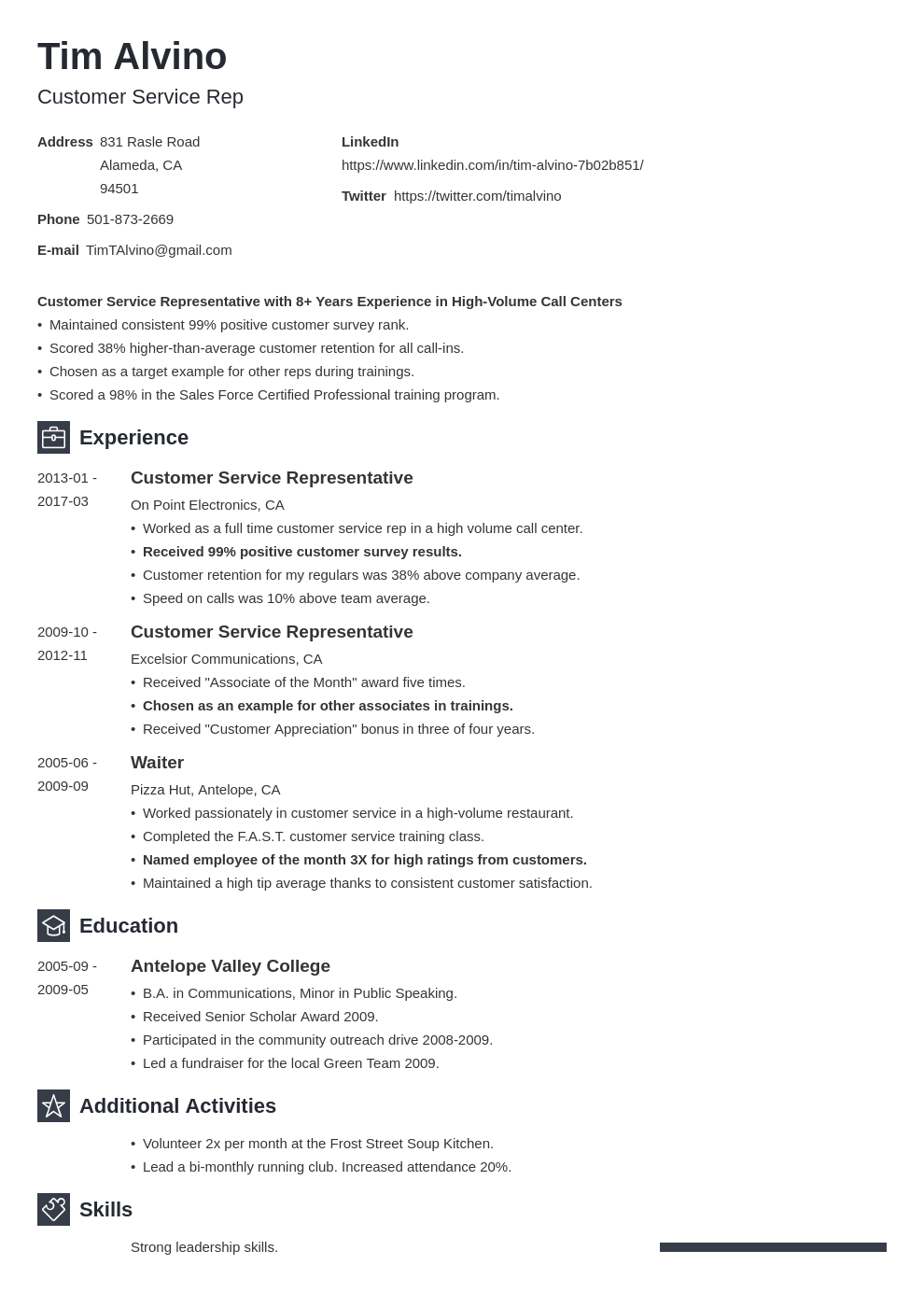
Recently, employers have started using more creative job titles than in the past, which can cause some confusion about what it is that you actually do. Since this is a headline, it should be written in title case with the first word as well as all nouns, verbs, and adjectives capitalized.


For example, if the employer is seeking a high school teacher with ESL experience, include those exact specifics in your headline. Most job listings outline the skills and experience that they desire in a candidate, so use these as keywords for your resume headline. That way there’s less of a chance that the hiring manager will skim over it and when it grabs their attention, they’ll keep reading rather than flipping to the next resume in the stack. Place It At The TopĪs mentioned above, place your resume headline at the top, just under your name and contact information. Remember, you can elaborate more in your resume summary or resume objective. Keep it to a single sentence - or better yet, just one powerful phrase. You want potential employers to easily remember you, so the shorter your headline is, the better. Here are some tips to help you get started: Keep Your Headline Short Writing a powerful resume headline might seem daunting, especially if you aren’t a wordsmith. In almost any other case, a well-crafted resume headline will serve you well. The only reason not to include a resume headline would be if you absolutely cannot fit your resume onto a single page unless you omit the headline. Including a resume headline with keywords from the job listing will increase the chances that your resume will check the ATS’s boxes for experience, skills, and past job titles. Plus, many employers use applicant tracking system ( ATS) software, which means that your resume first has to pass a robotic scan before a human hiring manager even lays eyes on it. Most hiring managers only spend a few seconds looking at each resume, so use a resume headline to catch their attention immediately rather than hope that they read through years’ worth of experience - chances are they’ll just see a huge block of text and their eyes will glaze over.
Headline for resume examples professional#
Resume headlines are also beneficial for those with some or extensive professional experience, as it narrows your entire career down into a single punchy sentence. You can also use your headline to showcase your skills or character traits that make you a good fit for the job. If you have little or no work experience to show, a resume headline allows you to highlight a big achievement like earning a military medal or winning a prestigious scholarship. It immediately points out your value and helps to focus your entire resume. Should You Include a Resume Headline?Ī resume headline can benefit almost anyone. Your resume headline can also be incorporated into your resume summary statement, serving as a heading for that section. Your headline will generally include your current or most recent job title if you have one, or otherwise succinctly explain your status - you might say that you are a student, recent graduate, or armed forces veteran in place of a typical job title.Ī stellar resume headline will be phrased in such a way that it not only sums up your work experience but it also includes your achievements, certifications, and positive traits. It goes at the top of your resume, just under your header (i.e.

Resume headlines are also sometimes called resume titles or taglines.

Headline for resume examples how to#
This article will cover what exactly a resume headline is, whether you should include one, how to craft an excellent headline, and several examples to help you get started.


 0 kommentar(er)
0 kommentar(er)
